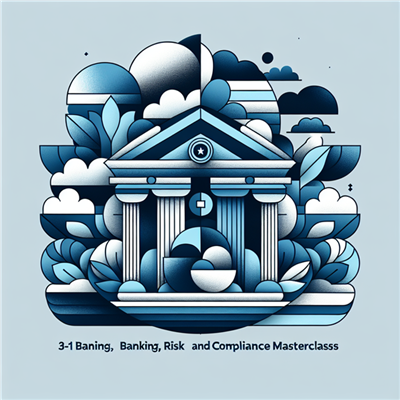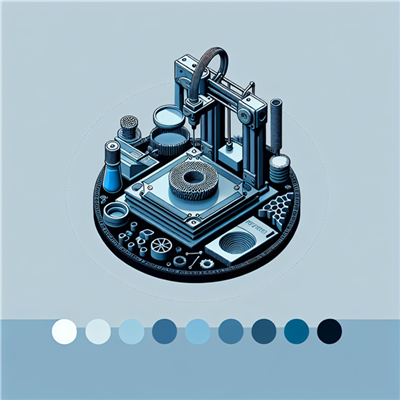
Application architecture has become increasingly critical for organizations in creating scalable, reliable, and efficient systems. Application architects play a key role in designing software solutions that meet business goals and adapt to future needs. To prepare for this role, professionals often pursue an Application Architect Certification program, which typically includes training on a range of tools and frameworks essential for designing and managing complex systems.
In this blog, we will explore some of the most valuable tools and frameworks commonly covered in these certification programs, including UML (Unified Modeling Language), AWS (Amazon Web Services), Spring Framework, and more. Each tool brings a unique set of capabilities that enhance the architecture process and provide a comprehensive skill set for application architects.
Tools and Frameworks Covered in Application Architect Certification Programs
1. Unified Modeling Language (UML)
What is UML?
Unified Modeling Language (UML) is a visual language used to model and design software systems. It provides standardized notations to represent the structure and behavior of software applications, making it a vital tool for architects in designing and communicating software architecture.
Why It’s Covered in Certification Programs
In application architecture, clear communication is essential. UML enables architects to create diagrams that describe the relationships between components in a way that’s understandable for both technical and non-technical stakeholders. Certification programs cover UML to ensure architects can effectively convey complex ideas and design elements through visual representations.
Key Features and Skills
- Class Diagrams: Show relationships between classes and objects in the system.
- Use Case Diagrams: Describe the interactions between users and the application.
- Sequence Diagrams: Represent the sequence of events in a process or use case.
- Component Diagrams: Illustrate how different components interact within the architecture.
Real-World Applications
UML is used across industries for projects that require clear documentation and visualization of software design. It’s a fundamental skill for application architects involved in designing enterprise-level systems, microservices, or any complex software application.
2. Amazon Web Services (AWS)
What is AWS?
AWS is a comprehensive cloud computing platform that offers a suite of cloud services, including computing power, storage, and networking. AWS is widely used for building and deploying scalable applications in the cloud, and understanding AWS is essential for modern application architects.
Why It’s Covered in Certification Programs
As more organizations migrate to the cloud, application architects need to design solutions that are scalable, resilient, and optimized for cloud environments. Certification programs typically include AWS to ensure architects can design cloud-native applications and leverage AWS services for greater scalability and cost-effectiveness.
Key Features and Skills
- Amazon EC2: For virtual servers and scalable computing power.
- Amazon RDS: Managed relational database services.
- Amazon S3: Object storage service for managing and storing large amounts of data.
- AWS Lambda: Enables serverless computing for running code in response to events.
- Networking and Security: Key services like VPC (Virtual Private Cloud), IAM (Identity and Access Management), and CloudFront for secure, optimized deployments.
Real-World Applications
AWS skills are essential for architects working in cloud environments. Application architects leverage AWS to design cloud-native applications, automate infrastructure, and manage large-scale deployments. AWS is widely adopted across industries, from startups to Fortune 500 companies, due to its flexibility, scalability, and robust service offerings.
3. Spring Framework
What is Spring Framework?
Spring is an open-source framework for Java-based applications, offering comprehensive tools for building, managing, and deploying applications. Known for its flexibility and simplicity, Spring is widely used for enterprise applications, microservices, and cloud-native applications.
Why It’s Covered in Certification Programs
Spring Framework is commonly included in certification programs due to its extensive capabilities in building scalable, maintainable applications. The framework supports various programming paradigms, integrates well with other tools, and simplifies the development of complex Java applications, making it invaluable for application architects.
Key Features and Skills
- Dependency Injection: Simplifies object creation and management, leading to cleaner code.
- Spring Boot: Allows rapid application development with minimal configuration.
- Spring Cloud: Tools and features for building microservices that integrate well in cloud environments.
- Data Management: Integrates with JPA (Java Persistence API) for managing data access layers.
Real-World Applications
The Spring Framework is used extensively in enterprise applications, especially in sectors such as finance, healthcare, and e-commerce. Application architects use Spring for projects requiring robust, scalable backend solutions, and its ease of integration with cloud services makes it ideal for modern, cloud-native applications.
4. Microsoft Azure
What is Microsoft Azure?
Microsoft Azure is a cloud computing service that supports a wide range of programming languages, frameworks, and tools. It offers infrastructure as a service (IaaS), platform as a service (PaaS), and software as a service (SaaS) for building and managing applications.
Why It’s Covered in Certification Programs
Given the widespread adoption of Azure in enterprises, certification programs often cover it to ensure application architects can design applications that leverage Azure’s extensive cloud infrastructure. Familiarity with Azure allows architects to design and deploy applications in hybrid and multi-cloud environments.
Key Features and Skills
- Azure Virtual Machines: Provides virtual servers for cloud computing.
- Azure SQL Database: Managed database service optimized for cloud applications.
- Azure Kubernetes Service (AKS): Managed Kubernetes service for containerized applications.
- Azure DevOps: Set of development tools for CI/CD, project management, and code repositories.
Real-World Applications
Azure is widely used in large enterprises, especially those with existing Microsoft infrastructure. Application architects use Azure to design scalable, reliable applications with tight integration with other Microsoft products like Active Directory and Microsoft 365.
5. Kubernetes
What is Kubernetes?
Kubernetes is an open-source platform for managing containerized applications across multiple hosts. It automates application deployment, scaling, and operations, making it a preferred tool for running and managing microservices.
Why It’s Covered in Certification Programs
As microservices architectures become more popular, Kubernetes is increasingly used for deploying and managing containerized applications. Certification programs cover Kubernetes to equip architects with skills in managing distributed systems and creating resilient, scalable infrastructure.
Key Features and Skills
- Container Orchestration: Automates the deployment and scaling of containers.
- Service Discovery and Load Balancing: Manages routing and traffic distribution between containers.
- Storage Orchestration: Allows containers to use storage from various providers.
- Self-Healing: Automatically replaces or restarts containers that fail.
Real-World Applications
Kubernetes is widely used for applications requiring high availability and scalability, such as e-commerce sites and SaaS applications. Application architects leverage Kubernetes for automating deployments and ensuring application reliability in dynamic environments.
6. Apache Kafka
What is Apache Kafka?
Apache Kafka is a distributed streaming platform used for building real-time data pipelines and applications. It allows data to flow between systems in a robust, fault-tolerant manner, making it ideal for real-time analytics and event-driven architecture.
Why It’s Covered in Certification Programs
Kafka’s ability to handle high-throughput data streams makes it valuable for architects designing systems that require real-time data processing. Certification programs include Kafka to help architects build event-driven systems that enable faster, data-driven decision-making.
Key Features and Skills
- Event Streaming: Collects and processes large volumes of events in real time.
- Data Integration: Integrates data from various systems into a cohesive stream.
- Fault Tolerance: Provides data replication and recovery mechanisms to ensure reliability.
Real-World Applications
Apache Kafka is widely used in industries like finance, healthcare, and IoT for processing real-time data and building event-driven architectures. Application architects employ Kafka to ensure high availability and reliability in systems that depend on continuous data flows.
7. Docker
What is Docker?
Docker is a platform for developing, shipping, and running applications in containers. Containers are lightweight and portable, making Docker an essential tool for modern application development and deployment.
Why It’s Covered in Certification Programs
Docker is covered in certification programs to provide architects with the skills to create portable applications that can run consistently across different environments. Containerization is a key aspect of DevOps and microservices, both of which are critical in modern application architecture.
Key Features and Skills
- Containerization: Packages applications and dependencies in isolated containers.
- Multi-Environment Consistency: Ensures applications run the same way in development, testing, and production.
- Resource Efficiency: Optimizes server usage by running multiple containers on the same host.
Real-World Applications
Docker is used across various industries for building and deploying applications. Application architects leverage Docker to build microservices and DevOps pipelines, streamlining application development and deployment.
Conclusion
An Application Architect Certification Program provides a comprehensive understanding of the tools and frameworks essential for designing, building, and managing complex applications. From UML for modeling to AWS and Azure for cloud deployment, these tools equip application architects with a robust skill set to meet the demands of modern software development. Mastering these tools not only enhances an architect's technical expertise but also opens doors to a range of high-impact, rewarding roles in the tech industry. Whether you're planning to move into an architecture role or looking to
In the evolving world of software development, an application architect certification is a valuable asset. It not only enhances your skills but also opens up new career opportunities. By choosing a reliable training provider like Koenig Solutions, you can ensure that you're on the right path to achieving your career goals.







COMMENT